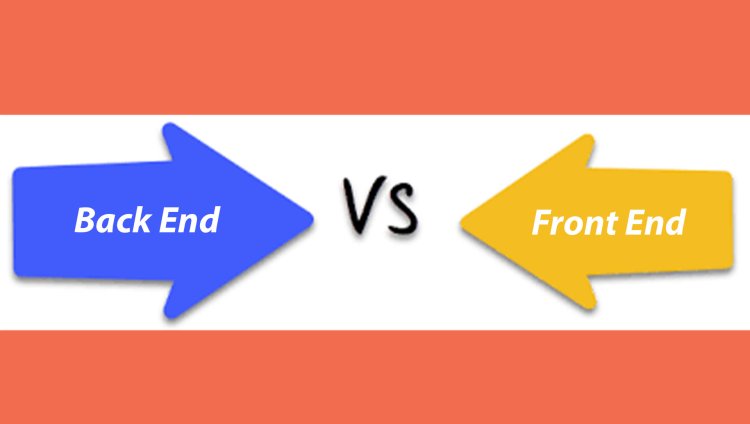Front-End vs. Back-End Development: Unveiling the Two Pillars of Web Development

In the intricate world of web development, two indispensable pillars work in harmony to create the seamless digital experiences we enjoy every day. These two pillars are none other than front-end and back-end development. In this blog post, we will embark on a journey to uncover the distinctions, functions, and significance of front-end and back-end development in shaping the modern web landscape.
Front-End Development: Crafting User-Facing Experiences
Front-end development, often referred to as client-side development, focuses on the user-facing aspects of a website or web application. It's responsible for creating the visual and interactive elements that users directly interact with. In simpler terms, front-end development is what you see and experience when you visit a website.
Key Components and Responsibilities of Front-End Development:
HTML (Hypertext Markup Language): The foundation of web pages, HTML structures the content and lays the groundwork for other elements.
CSS (Cascading Style Sheets): CSS adds style and visual appeal to HTML elements, encompassing layout, colors, fonts, and animations.
JavaScript: The scripting language that brings interactivity to web pages. JavaScript enables dynamic content, animations, form validation, and more.
Responsive Design: Ensuring that websites adapt seamlessly to different screen sizes and devices, providing a consistent experience for users.
User Experience (UX) and User Interface (UI) Design: Collaborating with designers to create intuitive and visually appealing interfaces that enhance user engagement.
Front-end developers play a crucial role in bridging the gap between design and functionality, striving to create an engaging and user-friendly environment for visitors.
Back-End Development: Architecting the Digital Infrastructure
While front-end development focuses on what users see and interact with, back-end development operates behind the scenes, making everything run smoothly. Back-end, or server-side, development involves the creation and maintenance of the server, databases, and the logic that powers a website or application.
Key Components and Responsibilities of Back-End Development:
Server-Side Languages: Back-end developers use programming languages like Python, Ruby, PHP, Java, and Node.js to build the logic that handles user requests and data processing.
Databases: Storing and managing data efficiently is a core task of back-end development. Databases like MySQL, PostgreSQL, and MongoDB are used to handle data storage and retrieval.
APIs (Application Programming Interfaces): APIs facilitate communication between different software components, allowing data and functionality to be shared between front-end and back-end systems.
Security and Authentication: Implementing measures to secure user data, prevent unauthorized access, and manage user authentication.
Scalability and Performance: Back-end developers optimize code and server infrastructure to ensure fast load times and smooth performance as user traffic increases.
In essence, back-end development forms the backbone of a web application, handling data, business logic, and interactions with external services.
The Symbiotic Relationship: Front-End and Back-End Collaboration
While front-end and back-end development have distinct focuses, they are interdependent and must collaborate effectively to create a cohesive and functional web solution. The user experience is a result of this collaboration, where the front-end makes interactions engaging and intuitive, while the back-end ensures data integrity, security, and efficient processing.
In summary, front-end and back-end development are like two sides of a coin, each contributing to the holistic web development process. Aspiring web developers should recognize the importance of both aspects and cultivate a well-rounded skill set that allows them to excel in both areas. Whether you're crafting eye-catching interfaces or building robust infrastructure, the synergy between front-end and back-end development is what ultimately shapes the digital experiences we rely on every day.
What's Your Reaction?















